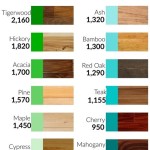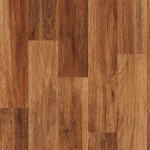Essential Aspects of Installing Laminate Tile Flooring in the Kitchen
Laminate tile flooring offers a durable, affordable, and visually appealing option for kitchens. Its easy maintenance and resistance to moisture make it an ideal choice for the high-traffic areas of a kitchen. Here are the essential aspects of installing laminate tile flooring in the kitchen:
1. Preparation:
Before installing laminate tile flooring, it is crucial to prepare the subfloor. Ensure the subfloor is level, flat, and free of any unevenness or debris. If necessary, use a self-leveling compound to smooth out any imperfections.
2. Baseboard Removal:
Remove the baseboards around the kitchen to allow for the laminate tiles to be installed seamlessly against the walls. Once the flooring is installed, the baseboards can be reattached.
3. Underlayment:
An underlayment provides a protective barrier between the subfloor and the laminate tiles. It helps reduce noise, moisture, and unevenness. Choose an underlayment that is specifically designed for laminate flooring.
4. Tile Selection:
Laminate tiles come in various styles, colors, and textures. Choose tiles that complement the kitchen's décor and meet your durability requirements. Consider the kitchen's traffic patterns and select tiles with appropriate wear resistance.
5. Installation:
Laminate tiles are typically installed using a floating method. Each tile has interlocking edges that allow them to be snapped together. Start from a corner of the kitchen and work your way out, ensuring that the tiles are firmly connected.
6. Expansion Gaps:
Laminate flooring expands and contracts with temperature and humidity changes. Therefore, it is essential to leave small gaps around the perimeter of the room to allow for movement. Use spacers during installation to ensure consistent gaps.
7. Cutting:
For areas where the tiles do not fit perfectly, you may need to cut them to size. Use a sharp utility knife or a laminate cutter to make precise cuts. Always measure carefully and wear safety glasses when cutting.
8. Transition Strips:
If the laminate flooring transitions into other areas of the house, such as a hallway or living room, you will need to install transition strips. These strips provide a smooth and seamless transition between different flooring materials.
9. Care and Maintenance:
Laminate tile flooring is relatively easy to maintain. Sweep or vacuum regularly to remove dirt and debris. Mop the floor occasionally with a mild cleaner specifically designed for laminate flooring. Avoid using abrasive cleaners or excessive water, as they can damage the tiles.
By following these essential aspects, you can confidently install laminate tile flooring in your kitchen and enjoy its durability, style, and ease of maintenance for years to come.

Installing Laminate Tile Flooring Diy Instructions

Tips For Installing A Kitchen Vinyl Tile Floor Merrypad

Installing Laminate Tile Flooring Diy Instructions

Installing Laminate Tile Flooring Diy Instructions

Laminate Flooring In Kitchens Do It Yourself Installation

Installing Laminate Tile Over Ceramic Diy Floors Wonderhowto

Can You Replace Kitchen Flooring Without Removing Cabinets

How To Lay Waterproof Laminate Tiles In Your Home Leader Floors Blog

Do You Install Floating Floor Under Cabinets Wood Flooring

Can I Install Laminate Floors On Ceramic Tiles The Carpet Guys
Related Posts








